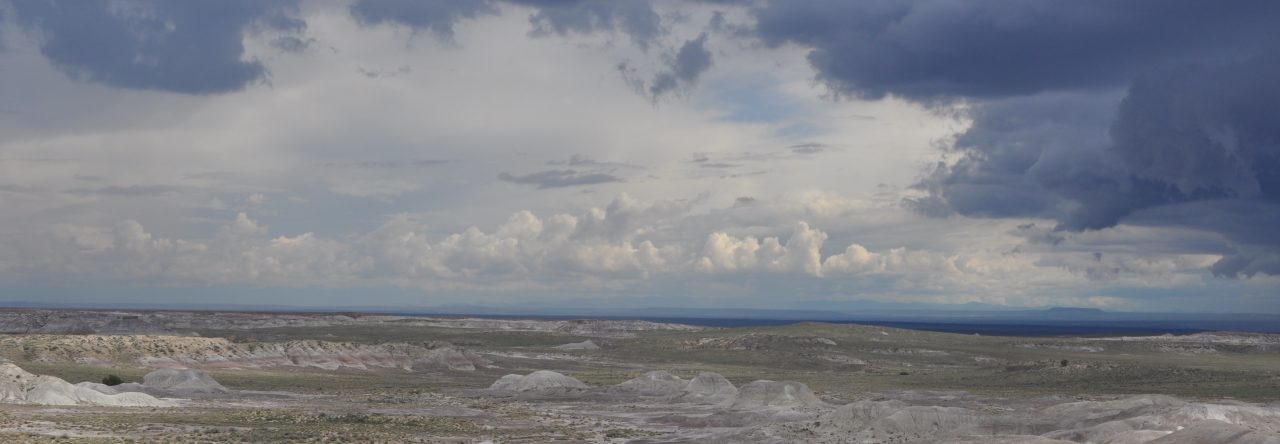
In the Spring of 2009, our Native students at the University of Illinois asked me to say the closing remarks for the Native American House Congratulatory Ceremony. The event took place on May 16, 2009. Since we are appoaching the end of the academic year, I thought that it would be fitting if I posted these remarks on my blog.
————————————
Returning to the Cottonwood Trees of Our Communities
Matthew Sakiestewa Gilbert
I have the privilege and honor of saying a few closing remarks to end our time together.
We are fortunate at the University of Illinois to have students who have not forgotten that the greatest “scholars” and teachers come from their own communities. These men and women have not published books for Oxford or Harvard University Press. They have not published articles in the esteemed journals of the academy. But they are known by people in their communities as the gatekeepers and protectors of intellectual property, and teachers of knowledge.
Among my people in northeastern Arizona, parents, grandparents, uncles, aunties, and other community members often told their children stories about the owl, the squirrel, and giant beasts that threatened to destroy the Hopi way of life. Hopi elders shared these stories with their children to teach them life lessons. Lessons that would help them to succeed in life, contribute to their communities, and to be passed on to their children and grandchildren.
At an early age, Hopi children were taught to value hard work, and to shun laziness. “Get up before Taawa, itana (the sun, our father) greets our village,” Hopi parents often told their children, “Taawa, itana has many things to accomplish throughout the day, and he need not waste his time and energy on getting you out of bed.”
The stories and teachings that have emerged in Hopi and other indigenous cultures have great meaning for people of the past, present, and future. They ground Native people in their communities, they connect us to our places of origin, and they forever remind us of who we are as Choctaw, Ho-Chunk, Kiowa, and other indigenous people.
I am reminded of a story that originates from my village of Moencopi that Hopi educator Dr. Noreen (Kewanwytewa) Sakiestewa once retold about a young girl who was lazy, and did absolutely nothing. She did not help her parents take care of her siblings, she refused to grind corn, and she had no desire to learn Hopi stories and songs. Seeing her laziness and apathy, people in the village called her kyena, which is Hopi slang for “ignorant one.”
Sakiestewa recounts that one day, as the girl wandered about near the wash by her village, she sat under a large cottonwood tree. The wise old cottonwood tree realized that her people, and even the animals, had become angry with her, and so he asked the young girl: “Why are you not a part of your people?” The girl did not respond, and so the wise old cottonwood tree told her to gather yucca plants and to bring them to him.
When she returned, the wise old cottonwood tree taught her how to weave a plaque with a coil design. But the girl became restless, and she wanted to learn other design patterns to incorporate in her plaques. So the wise old cottonwood tree told her to observe the things of nature. “Look at the sky, the mountains, and the animals, and they will show you new patterns for your plaques.”
After several days or traveling and searching, the young girl from Moencopi came across a rattlesnake who asked her why she had wandered so far from her village. “I am on a journey to find new designs,” she told him. And so the wise old snake said to her, “Look at the design on my back. I give you permission to use my design in your plaques.”
Soon the young girl came across other designs, and months later, she returned to her people with beautiful plaques and immediately started teaching her sisters, and other girls in the village how to make baskets. All that she had learned amazed the people at Moencopi. And from that day forward, they no longer called her kyena.
In her retelling of this story, Sakiestewa asks the question:
“At what point did the girl come out of not being kyena? Overwhelmingly, the response was when she learned to make baskets. The Hopi response to when she stopped being kyena was when she returned and taught the skill of basket making thereby completing her circle.” [Norene E. Kewanwytewa, “Being Hopi: A Collaborative Inquiry Into Culturally Responsive Education,” Ed.D. Dissertation, Northern Arizona University, 2002, pp. 2-4].
Today, as we gather together to honor our students, I close by urging our Native graduates to return to the cottonwood trees of their communities. Complete the circle, and take what you have learned at the University of Illinois and contribute something useful to your people. And never forget that long ago, our people held to and practiced indigenous ways of understanding that provided meaning, and continue to provide meaning, for every aspect of life.
